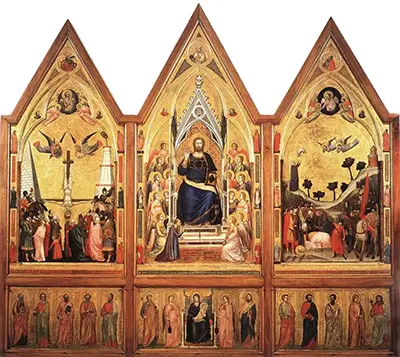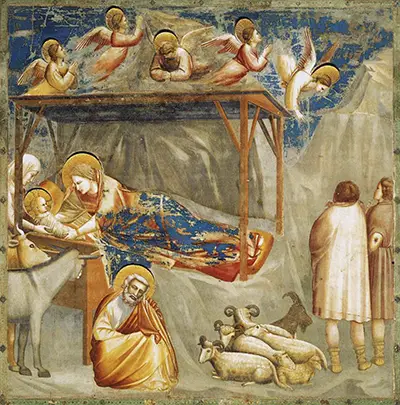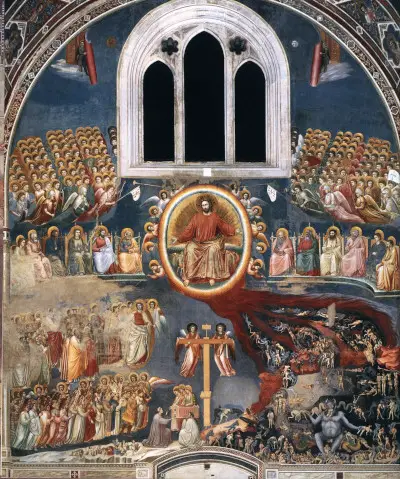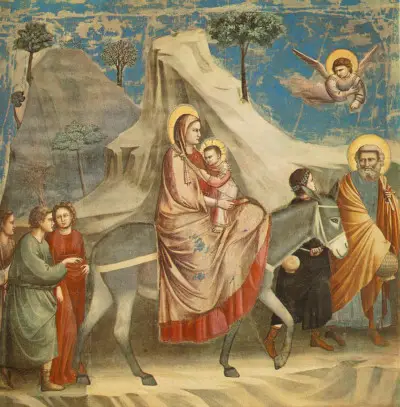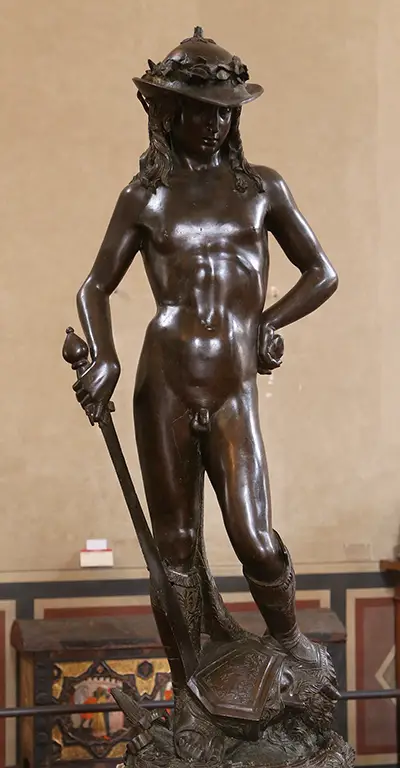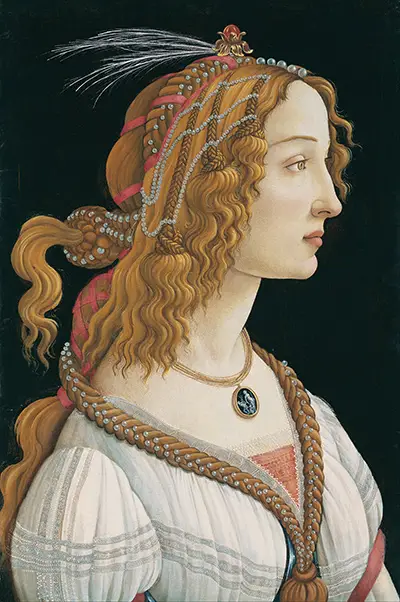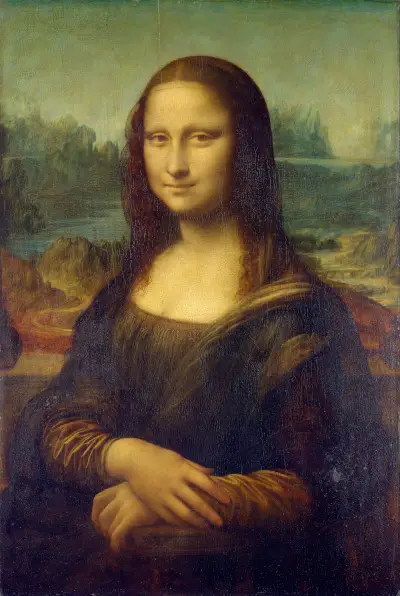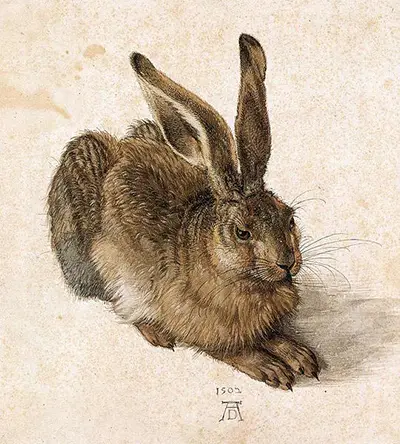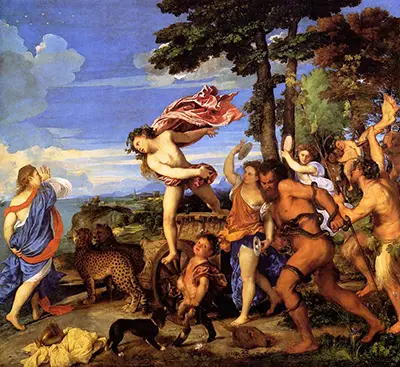Washing of the Feet was a Giotto fresco for the Scrovegni Chapel which refers to a passage from the Life of Christ, as outlined in the Bible.
Introduction
The artist completed his work in the very early 14th century, shortly after a period in Assisi. His Padua-based work would prove even more successful, and helps to retain his reputation in our minds today.
Life of Christ Series
Washing of the Feet is a tale which has inspired many visual artists, sometimes as an independent artwork, and on other occasions as part of a Life of Christ series, as was the case here. The artist planned each artwork to be of a consistent size so that the rows would fit together correctly. This piece is therefore the uniform dimensions of 200 cm by 185 cm, though other parts of the internal walls required customized designs.
Description of the Painting
We find a group of disciples sitting around in a circle. One figure can be seen putting his sandals back on, whilst another has taken them off. Peter sits to the right hand side and clutches part of his clothing to avoid it becoming wet, whilst Christ talks to him.
This open room is decorated with a charming roof and ceiling which appears to be for outdoor, summer use. Stunning detail runs across the top of the painting as a supporting element to the narrative which runs below.
Passage from the Bible
He riseth from supper, and laid aside his garments; and took a towel, and girded himself. After that he poureth water into a bason, and began to wash the disciples’ feet, and to wipe them with the towel wherewith he was girded.
Gospel of St John, 13:4-5
Peter would initially reject the offer of washing his feet, but would be convinced by Christ and eventually allow it to happen. Perhaps this story represents humanity’s initial guardedness towards religious preaching, but acceptance once its benefits are explained.
Degradation of the Halos
The halos around the disciples have faded considerably, with the original golden paint now being replaced by a drab dark tone. Christ’s halo retains its color, though, and it is likely that the original work would have been the same for all, meaning that a restorer has chosen to correct Christ’s halo, but not the rest.
Connection to the Last Supper
This tale fits into the overall period of The Last Supper, and Giotto would take a number of scenes from this part of the Bible. Famously, his Kiss of Judas remains one of the most memorable parts of his work in the Scrovegni Chapel and this type of content was ideally suited to his mastery of emotion and figurative art.
Conclusion
Washing of the Feet remains a great inspiration to religious artists and was a natural choice for inclusion within Giotto’s Life of Christ series. Most items in this series are now overlooked in favor of the collective whole, but each one offers qualities in their own right that are worthy of note.
One can immediately identify this as part of his work in Padua, because of the consistency in style that he incorporated across the main frescoes here, even though he worked alongside a number of assistants in order to complete this large project in a timely manner.
More Renaissance Artists




 Giotto.jpg)
 Giotto.jpg)
